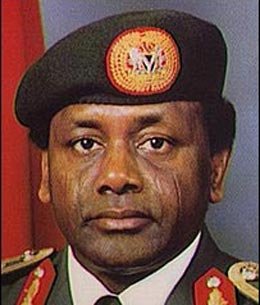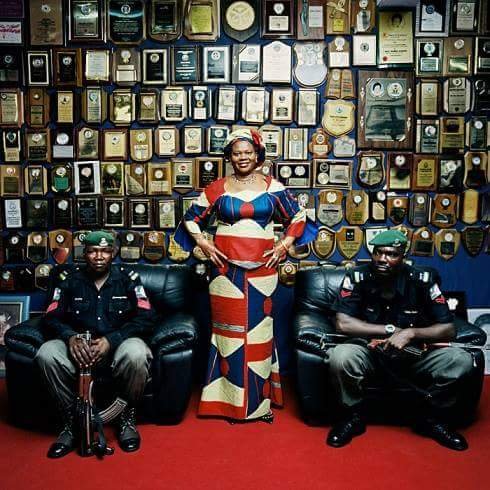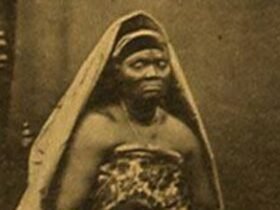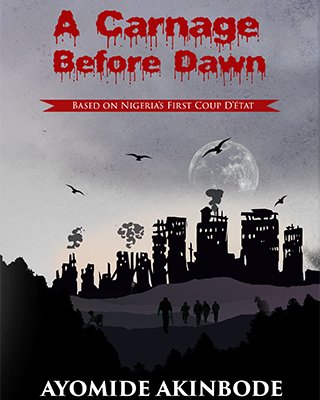No products in the cart.

“I will not sign it and I will not swear in the Chief Justice-designate. My lawyers have told me it’s an impeachable offence,” Acting President Goodluck Jonathan boldly told members of the Umaru Musa Yar’Adua’s presidency who had come to persuade him into signing the 2010 budget and to swear-in Justice Aloysius Iyorgyer Katsina-Alu as the 17th Chief Justice of Nigeria.
You can watch the video here.
A Storm in a Teacup
Goodluck Jonathan, as Nigeria’s Vice President, was supposed to act as President and discharge the duties of the office as Acting President whenever his boss, President Umaru Musa Yar’Adua, was not around in reference to Section 145 of the 1999 Nigerian Constitution. Unfortunately, the President who had been battling diverse life-threatening diseases “failed” to transmit a letter to the National Assembly under the afore-quoted section of the constitution which states that:
Contents
“Whenever the President transmits to the President of the Senate and the Speaker of the House of Representatives a written declaration that he is proceeding on a vacation or that he is otherwise unable to discharge the functions of his office, until he transmits to them a written declaration to the contrary, such functions shall be discharged by the Vice-President as Acting President.”
Jonathan’s lawyers and advisers argued that until the President transmits a letter, he had no power to act as President. Thus, according to them, any actions he carried out as Vice President that were required by the President, such as the signing of the budget and swearing-in of the Chief Justice of the Federation, would amount to usurpation of power which is impeachable under Section 143 (11) of the constitution.
To be fair to President Yar’Adua, he did write a letter to be transmitted to the National Assembly through the Attorney General of the Federation, Michael Kaase Aondoakaa. Unfortunately, the latter who was part of a kitchen cabinet or a faceless cabal failed to transmit the letter to the National Assembly. They felt the power of the President is too immense to relinquish just like that.
Besides, to hand over power to a “minority” (in this case, Goodluck Jonathan) was a risk too high for them to take. Earlier in the tenure, Jonathan had been sidelined from the scheme of things as Vice President but the President’s advisers kept stressing on “One Presidency”. However, Yar’Adua’s ailment served as a distraction to him and the cabal “had their way”.
Yar’Adua’s Ailment
On Monday, November 23, 2009, the President was flown out of the country to a hospital in Jeddah, Saudi Arabia, to receive treatment for pericarditis, an inflammation of the pericardium (the fibrous sac surrounding the heart). That was the last time the President was seen in public. He had left a power vacuum that nearly destroyed the country. The nation was at a standstill. The ministers did not know who to report or answer to. Leadership was rudderless.

The Nigerian Bar Association (NBA) argued that the President should have transmitted a letter while some prominent Nigerians like, the incumbent President, Muhammadu Buhari, called on the cabinet members and the National Assembly to declare the President incapacitated and subsequently impeach him. Protests against the Yar’Adua presidency sprung up in the major cities of Lagos and Abuja by the Save Nigeria Group (SNG), led by Pastor Tunde Bakare, Professor Wole Soyinka, and Dr. Joe Odumakin. They demanded the elevation of Vice President Goodluck Jonathan as Acting President pending the time the President would resume and discharge duties of his office.
The December 25, 2009, Christmas Day, failed terrorist attack on an American bound aeroplane by a Nigerian, Umar Farouk Abdulmutallab, the “Underwear Bomber”, further exposed the absence of the President. The United States of America did not hesitate to put Nigeria on her list of terrorist nations and travel restrictions were imposed on Nigerian travellers.
Jonathan’s Quandary
Back home, the heat was getting more intense. The Chief Justice of the Supreme Court, Justice Idris Legbo Kutigi was to retire as he was approaching the compulsory retirement age of 70 years.
After the National Judicial Council (NJC) had nominated Katsina-Alu as the next CJN and was to be sworn in on December 30, unfortunately, the President was not around. He was in a Saudi hospital and Vice President Goodluck Jonathan did not have the powers required to swear in a Chief Justice.
When Aondoakaa and other aides of President Yar’Adua approached Jonathan to swear in the CJN-designate, Jonathan declined and did not give in to their pleas. The AGF himself had argued that the President could rule the country from anywhere.
However, they reached a compromise in Section 10 (2) of the Oath’s Act and argued that either the President or the Chief Justice could swear in the incoming Chief Justice. In the end, it was agreed that Justice Kutigi should swear in his successor; the first and only time in the nation’s history. A relief to the Yar’Adua’s loyalists.
Two Chief Justices in One Day
Therefore, on Wednesday, December 30, 2009, a day before he was due to retire, Justice Kutigi swore in his successor, Katsina-Alu as the Chief Justice of the Supreme Court of Nigeria.
It was a misnomer and there were some controversies over the ceremony because there has never been a ceremony like that, before it or after it till this day, in which the Oath of Office for the CJN was not administered by the President/Head-of-State or someone vested with the powers of the President.
This was one of the ripple effects of the power vacuum left by the ailing President, Umaru Musa Yar’Adua.
By implication, it meant that Nigeria had two Chief Justices on the same day (December 30, 2009) as Kutigi himself declared during the inauguration, which witnessed the absence of seven out of fifteen justices of the Supreme Court, that he was still in charge until 12:00 am the next day when he would clock the statutory age of 70.
The Guardian newspaper of Thursday, December 31, 2009, quoted Kutigi thus:
“By 12 midnight today, I will be clocking the statutory retirement age of 70 and that means I will be retiring then. But for the interest of mischief makers who may go about writing that we have two Chief Justices of Nigeria, let me make it clear that for now, I am still in charge.
“The President has always been there to do the inauguration, but this time he is not there. So I, as the Chief Justice, have performed that duty. The Judicial Oath of Office and the Constitution of the Federal Republic of Nigeria, 1999, confer the power to swear in any judicial officer on the President and the Chief Justice. So there is nothing wrong with that.”
A Cabinet Divided
Nevertheless, the Minister for Information, Professor Dora Akunyili, felt cabinet members should invoke Section 144 of the Constitution. However, many of them, especially the Minister for Education, Dr. Sam Egwu, disagreed. They felt it would be “unfair” on the President to remove him from office; besides, Section 144 was too hasty a decision at the moment.
On the other hand, Section 144 of the constitution wouldn’t have removed President Yar’Adua from the Office per se, it would only have declared him incapacitated. But none of the ministers wanted to take the risk of being disloyal to his or her boss except Professor Akunyili who stood her ground that the Vice President should take charge pending the President’s return on the basis that the nation was at a standstill.
The Doctrine of Necessity
In light of the recent events, on Friday, January 22, 2010, the Supreme Court of Nigeria ruled that the Federal Executive Council (FEC), which is made up of the ministers appointed by the President, had 14 days to decide on a resolution on whether Yar’Adua was incapable of discharging his duties as President after an opposition activist, Farouk Adamu Aliyu, represented by his lawyer, Bamidele Aturu, brought a law-suit before it which asked the judges to sack the President over his failing health and for failing to abide by the provisions of the constitution.
Senate President David Mark was at an impasse with his colleagues and members of the then ruling party, the People’s Democratic Party, about the matter. Many of the President’s loyalists had thwarted any move the Senate might want to make in removing or dissipating the powers of the President. The President had not been heard of for weeks and many rumours were rife that he had been dead since December of 2009 in the Saudi hospital and that the nation was being run by a faceless cabal.
With the fears that the power vacuum would lead to anarchy and a possible military takeover, Mark then had a meeting with the Senators who had an educational background in Law and they reached a compromise by adopting the Doctrine of Necessity.
According to Wikipedia:
“The doctrine of necessity is the basis on which extra-legal actions by state actors, which are designed to restore order are found to be constitutional.”
Therefore, on Tuesday, February 9, 2010, the Red Chambers of the Senate and the Green Chambers of the House of Representatives, like a clock’s hands at twelve o’clock, joined hands and passed a resolution which empowered the Vice President, Dr. Goodluck Jonathan, as the Acting President and Commander-in-Chief of the Armed Forces.
Mr. Acting President, Sir!
This act by the National Assembly members did not go down well with loyalists of the President and they protested their disdain, on pages of newspapers and other media information, citing abuse of the constitution.
They were right. There’s no provision for such action in the Nigerian Constitution which empowered the National Assembly to pass such a resolution.
Nevertheless, Jonathan’s lawyers had anticipated this. The Acting President got wind that the embattled AGF had been working behind the scenes to challenge the ruling in court which, ceteris paribus, he was bound to win because the Constitution does not provide for an Acting President through a transfer of power to the Vice President by the National Assembly.
“What is your take on the National Assembly to make me the Acting President and Commander-in-Chief?” Jonathan asked Aondoakaa after he had summoned the latter to his office.
“I think it is a good decision, sir.”
“Well, I have decided to make a minor reshuffle of the cabinet. I’ll be deploying you to another ministry.”
“That’s good. But I’ll appreciate it if you can stay the action for now. There are some things I still need to sort out in the Justice Ministry,” Aondoakaa pleaded.
When the Cat’s asleep…
However, at the Federal Executive Council Meeting the next day after the Acting President had shocked everyone present by rejecting his seat and choosing to sit on the President’s seat, Jonathan announced the minor cabinet reshuffle.

He redeployed the AGF to the Ministry of Special Duties and transferred the Minister for Labour, Prince Adetokunbo Kayode, as the new Attorney General of the Federation and Minister of Justice. Everyone got the message, Jonathan was now fully in charge. The Yar’Adua presidency was coming to an end. Many of the ministers, who were hitherto Yar’Adua’s loyalists, started gravitating towards Jonathan.
But the President’s handlers would not give in without a fight and Saudi Arabia got the message.
Around 3:00 am on Wednesday, February 24, 2010, less than 15 days after Jonathan assumed the presidency in acting capacities, President Umaru Musa Yar’Adua made a surprise return to the country via the Nnamdi Azikiwe International Airport, Abuja to the Presidential Villa. This was seen as a calculated move by his handlers to upset the growing influence and stability of a clear fledgling Jonathan administration.
As Acting President, Jonathan bore the insignia of the Office of the President of the Federal Republic of Nigeria and also added the Commander-in-Chief (C-in-C) title to his name. In fact, the National Anthem preceded any address he had to make as Acting President.
Would that change, now that the President was back?
President Yar’Adua’s aide, the Special Adviser on Media and Publicity, Olusegun Adeniyi made matters worse when he addressed the Acting President as “Vice President Goodluck Jonathan”. In a counter move, the same day, Jonathan’s spokesperson, Ima Niboro, issued a statement and addressed Jonathan as “Acting President”. There was now a power-play in the villa as the secrecy surrounding the return of the ailing President threw up questions about who was really in charge.

Jonathan’s advisers warned that he could be shot by the Presidential Guard Brigade, whose responsibility is to protect the President if he carried on using the President’s insignia since he was now around. However, the Minister for Information argued that Jonathan was still the Acting President as he was mandated by the National Assembly that the only way he would revert to the title of “Vice President” was if the National Assembly revoked their endorsement of Jonathan.
Not many activities took place for the next few months other than Jonathan who tried his best to see his ailing boss but was denied by the First Lady, Mrs. Turai Yar’Adua.
A Passing Cloud
In late April 2010, Christian Clerics in the country who visited and prayed for the President reported to Jonathan that it would be a miracle for the President to resume and discharge the functions of his office.
One week later, President Umaru Musa Yar’Adua died. He was the first elected President to die in office and the second Head-of-State to die in Aso Rock after General Sani Abacha. It was not until after his death that Jonathan was able to see him.
The next day, Thursday, May 6, 2010, the Acting President was sworn into office as the 14th Head-of-State and the 4th Executive President of the Federal Republic of Nigeria. President Jonathan was now granted full powers of his office as enshrined in the Constitution.
With Yar’Adua gone, all the controversies, about who was President and who was not, were laid to rest. The rest, they say, is history.
If you liked this article, then please subscribe to our YouTube Channel for interesting historical videos and follow us on all our social media handles. Don’t hesitate to as well share this article with your friends.
You can also get A Carnage Before Dawn, a historical account of Nigeria’s first coup d’état. E-book here. Paperback here.
Sources
Adeniyi, O. (2011, December 13). Power, Politics and Death. Kachifo Limited. ISBN-13: 978-9785072600
Sahara Reporters (2010, February 13). The Doctrine of necessity in perspective. Sahara Reporters. Retrieved from http://saharareporters.com/2010/02/13/doctrine-necessity-perspective
Ughegbe, L. and Fagbemi, A. (2009, December 31). Kutigi makes history, swears in Katsina-Alu. https://guardian.ng/news/nigeria/national/kutigi-makes-history-swears-in-katsina-alu/
-
Pingback: Dora Akunyili: The Woman with many Awards – 🔴📣RedIceBlog ©️’14
Leave a Reply
You must be logged in to post a comment.







1 Comment
View Comments